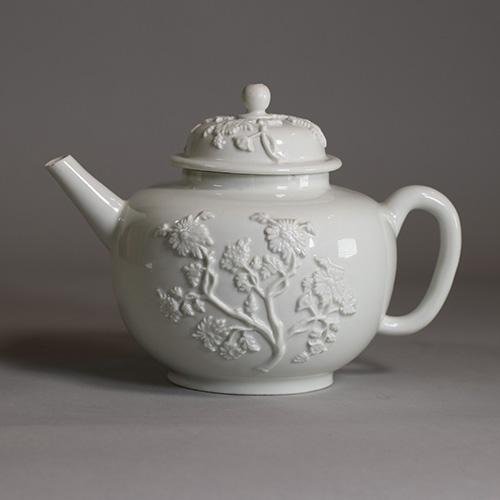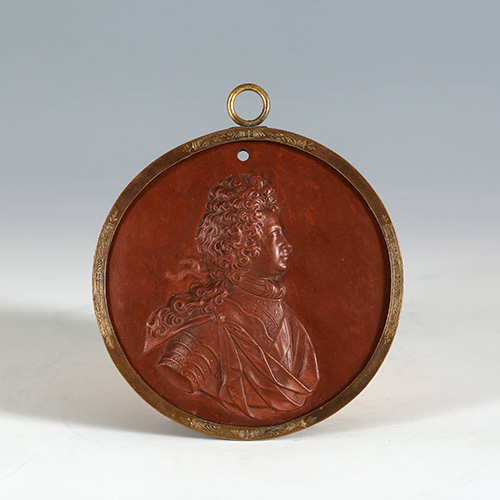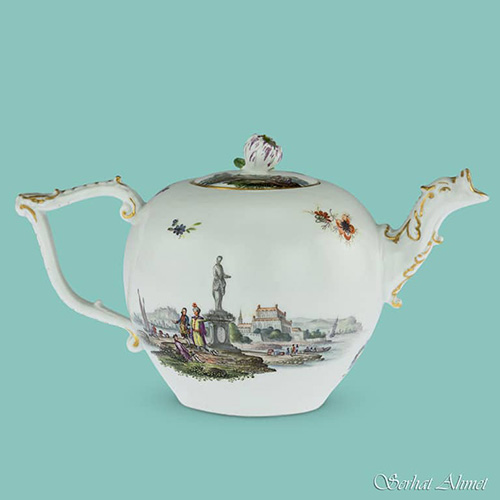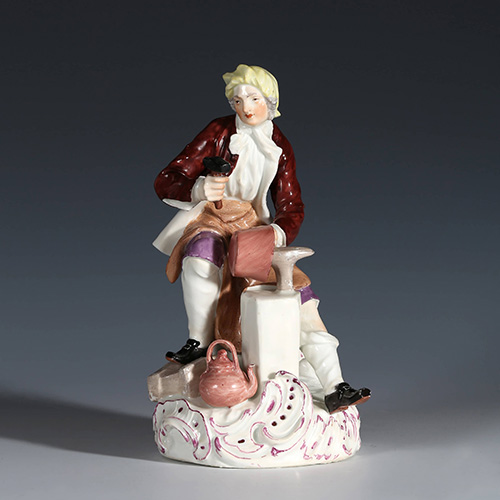

The beautiful town of Meissen in Eastern Germany is not only the home of Meissen Porcelain but more importantly is the birthplace of the European porcelain trade itself.
First discovered and developed in late 7th, early 8th century China and Japan, the secrets of hard paste porcelain eluded European understanding for the better part of a millennia. By the 17th century vast quantities of export porcelain were being imported to Europe by the Dutch East India Company and fine examples were considered equal in value to silver and gold. However, attempts to replicate them domestically remained unsuccessful.
The men credited with solving the conundrum were Ehrenfried Walther von Tschirnhaus (1651-1708) and Johann Friedrich Böttger (1682-1719). A fascinating character, Böttger was apprenticed to a Berlin chemist at age 18 but chose to dedicate his life’s work to the pursuit of alchemy, i.e., turning base metals into gold.
When Johann’s experiments came to the attention of Frederick I of Prussia, he had the young chemist taken into protective custody so that he might benefit from his work. Böttger managed to escape his confines but was recaptured in Dresden where he was imprisoned in a dungeon by Augustus II the Strong, Monarch of Saxony.
Augustus quickly tired of Johann’s failed attempts to produce gold and instructed the scientist Ehrenfried Walther von Tschirnhaus to oversee his efforts. For three years Böttger struggled in vain until in 1707, no doubt fearing for his life, he turned his interests to von Tschirnhaus’s own project, the development of hard paste porcelain.
 It is suggested by some sources that Böttger’s background in chemistry triggered a breakthrough, with the use of the clay mineral kaolin from nearby Schneeberg proving key to their success. However, many contemporary accounts maintain that von Tschirnhaus was the true inventor of European porcelain. The debate is further clouded by the fact that von Tschirnhaus died suddenly in October 1708. The recipe passed on to Johann who continued to refine the process and thus it was Böttger who announced the invention of porcelain to Augustus II on 28 March 1709.
It is suggested by some sources that Böttger’s background in chemistry triggered a breakthrough, with the use of the clay mineral kaolin from nearby Schneeberg proving key to their success. However, many contemporary accounts maintain that von Tschirnhaus was the true inventor of European porcelain. The debate is further clouded by the fact that von Tschirnhaus died suddenly in October 1708. The recipe passed on to Johann who continued to refine the process and thus it was Böttger who announced the invention of porcelain to Augustus II on 28 March 1709.
That same year Augustus established the Royal-Polish and Electoral-Saxon Porcelain Manufactory, selecting Meissen, for its location on the river Elbe and proximity to natural kaolin deposits. As the ‘inventor’ Johann Friedrich Böttger found himself appointed overseer of the first porcelain manufacturer in Europe and production began in 1710.
The earliest products were a type of red unglazed stoneware, similar to the popular Chinese Yixing clay tea pots of the time. It was thought that unglazed tea pots improved the flavour of the tea so Meissen’s early products, now known as Böttger ware, became in instant hit amongst Europe’s finest households.
In 1713, the production of hard white paste porcelain began at Meissen, which, unlike its red counterpart, could be glazed and painted. Chinese style scenes were hand painted and framed with a red or gold decoration known as “Laub- und bandelwerk” which loosely translates as foliage and strapwork.
 Meissen’s burgeoning reputation was cemented in 1720 following the capture of Johann Gregor Herold from the du Paquier Vienna porcelain factory, and his appointment as Director of the Meissen works. A gifted painter, Herold introduced a range of vivid overglaze colours to the Meissen palette which remain the basis for ceramic painting to this day.
Meissen’s burgeoning reputation was cemented in 1720 following the capture of Johann Gregor Herold from the du Paquier Vienna porcelain factory, and his appointment as Director of the Meissen works. A gifted painter, Herold introduced a range of vivid overglaze colours to the Meissen palette which remain the basis for ceramic painting to this day.
Strengthened by the patronage of Augustus the Strong, Meissen were able to attract the most gifted painters and ceramicists from all over Europe to improve their quality and expand their range. Soon traditional Chinese style landscapes were being replaced by more familiar European vistas, paintings by the French artist Antoine Watteau were a popular theme, together with animals, flowers, and nautical scenes.
Despite keeping their recipe a closely guarded secret, Meissen were betrayed in 1717 when head craftsman Samuel Stöltzel sold the details to a rival Viennese factory. In order to maintain the integrity of their products, Meissen introduced the iconic crossed swords trademark in 1720, based on the arms of the Elector of Saxony.
Fittingly, Meissen’s first figurine was a small white porcelain rendering of their patron King Augustus. They were devised as table decorations to replace the sugar sculptures which first became popular during the Renaissance. Collectors began to adopt the figures as ornamental decoration throughout the home and since the ceramic sculptures were cheaper than a dinner service, Meissen became affordable to a wider market for the first time.
 Under the leadership of master modeller Johann Joachim Kändler, Meissen began producing a vast range of porcelain figures. Popular designs included courtiers, characters from commedia dell'arte, animals, birds, allegories of the seasons and continents, and even an entire orchestra of apes in Hanoverian dress.
Under the leadership of master modeller Johann Joachim Kändler, Meissen began producing a vast range of porcelain figures. Popular designs included courtiers, characters from commedia dell'arte, animals, birds, allegories of the seasons and continents, and even an entire orchestra of apes in Hanoverian dress.
The outbreak of the Seven Years War in 1756, brought turmoil for the factory as Prussian troops occupied the town of Meissen. During the occupation, King Frederick II of Prussia successful lured a number of the artisans back to Berlin. There they were instrumental in establishing another great ceramic dynasty the Königliche Porzellan Manufaktur Berlin, better known to collectors by its abbreviation KPM Berlin.
Conflict would also dramatically impact production during the 20th century as most of the factory’s equipment were taken to the Soviet Union as war reparations after World War II. Incredibly, workers were able to fire up the kilns that had not been dismantled and begin production anew in 1946 less than a year after occupation.
Following the unification of Germany in 1990, Meissen porcelain is once again owned by the State of Saxony. Their high-quality wares continue to use many of the same designs that have been in production for nearly 300 years.
Click here to view a selection of Meissen works currently available from BADA Members.

